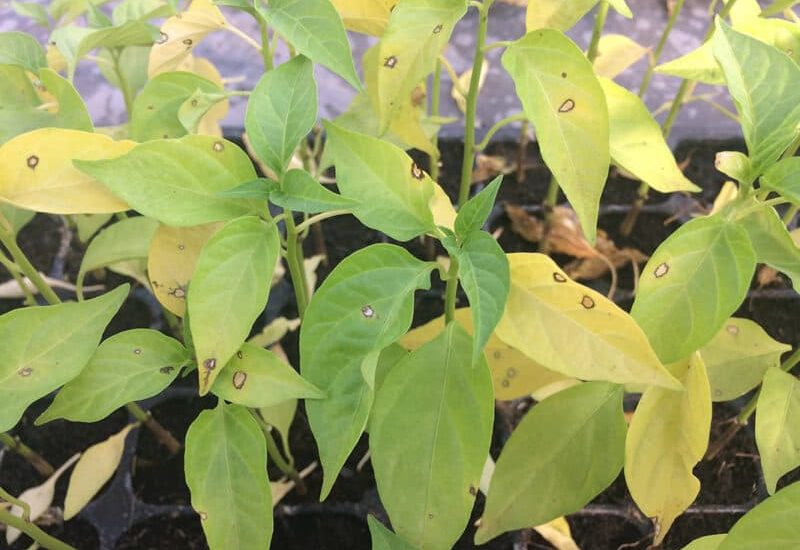Mushrooms to Grow at Home: A Beginner’s Guide
Mushrooms are a versatile and flavorful ingredient that can add depth and complexity to a variety of dishes. While they are readily available at most grocery stores, growing your own mushrooms at home can be a rewarding and cost-effective way to ensure a steady supply of fresh, high-quality mushrooms.
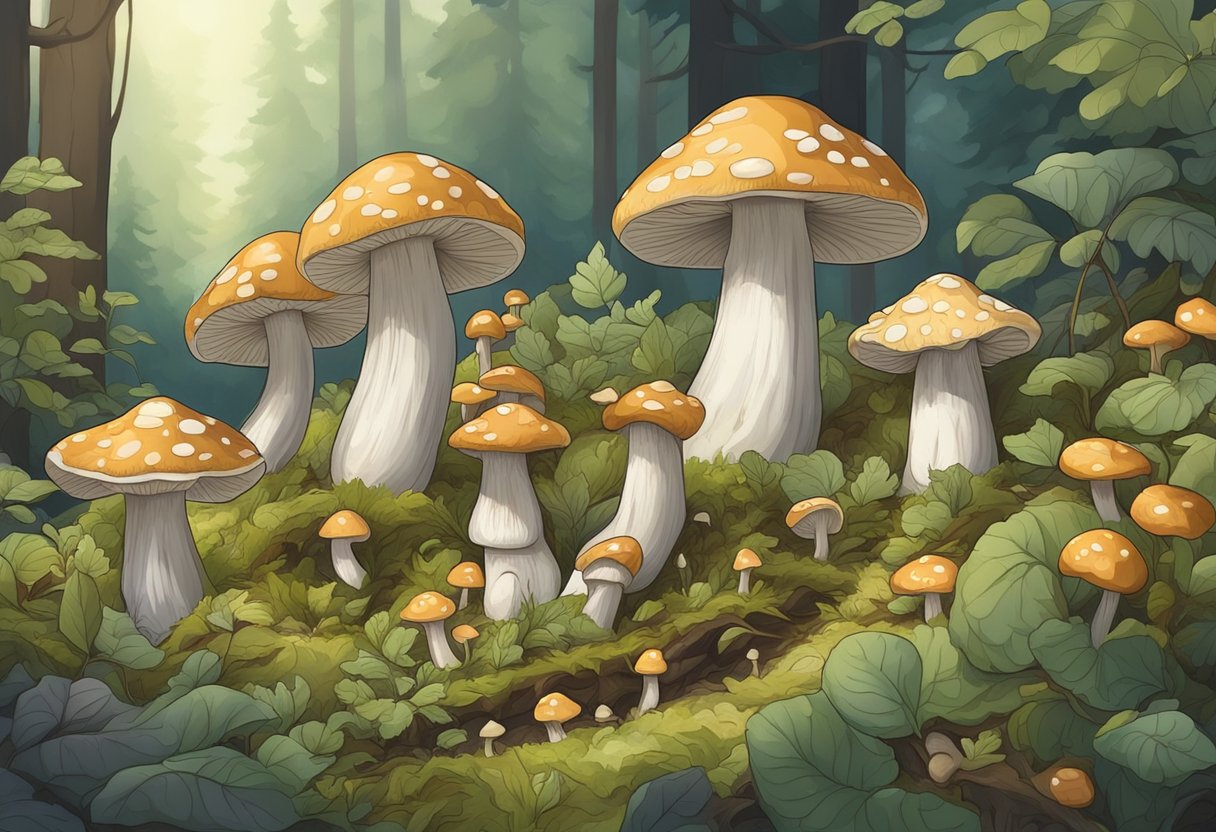
There are many different types of mushrooms that can be grown at home, including oyster, shiitake, and portobello mushrooms. Each variety has its own unique flavor and texture, and can be used in a wide range of recipes. Growing mushrooms at home is relatively easy and requires minimal equipment, making it an accessible hobby for both novice and experienced gardeners alike.
In this article, we will explore the benefits of growing mushrooms at home, as well as provide step-by-step instructions for how to get started. Whether you are looking to expand your culinary horizons or simply want to try your hand at a new gardening project, growing mushrooms at home is a fun and rewarding way to connect with nature and enjoy the fruits of your labor.
Choosing the Right Mushroom Species
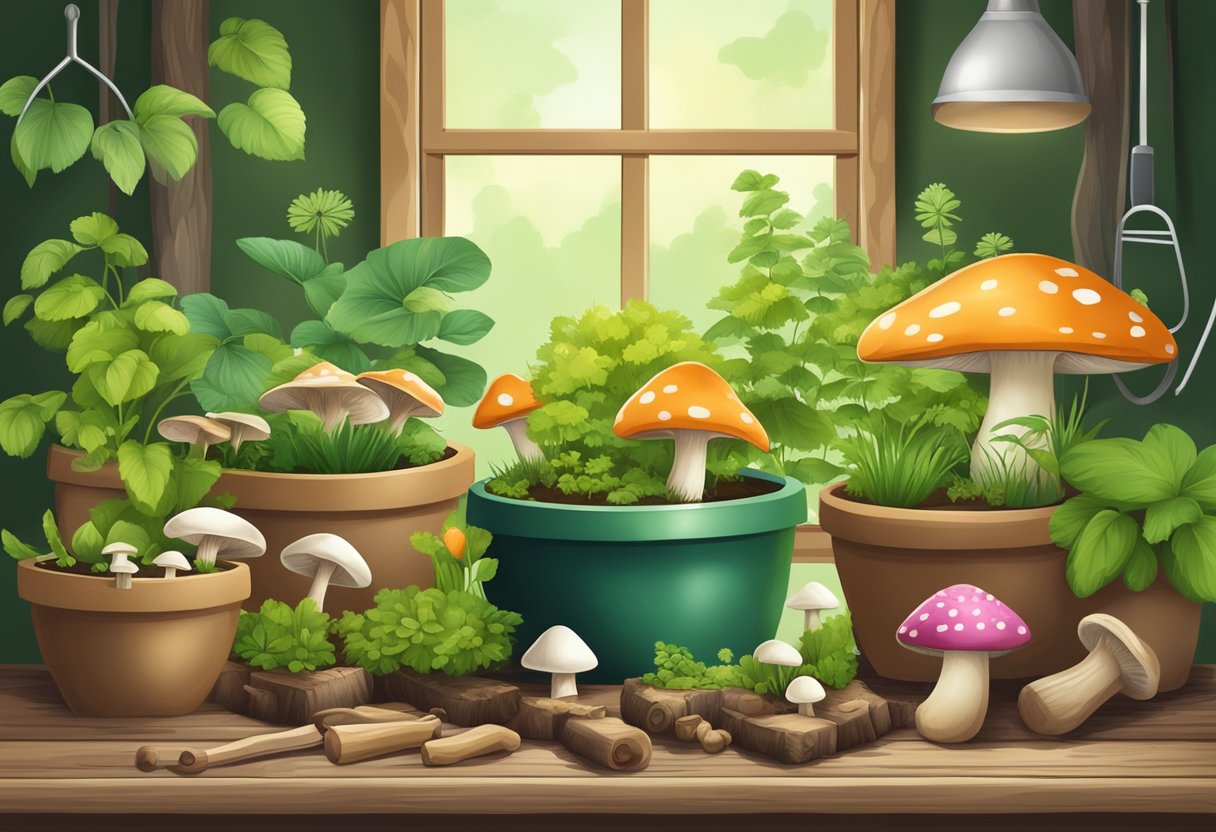
Understanding Different Mushroom Varieties
Mushrooms are a type of fungus that come in many different varieties. Each species has unique characteristics that make it suitable for different growing conditions and culinary uses. Some mushrooms are easier to grow at home than others, and it is important to understand the differences between them before choosing which ones to cultivate.
Popular Species for Home Cultivation
There are several species of mushrooms that are popular for home cultivation due to their ease of growing and delicious flavor. Here are some of the most common types of mushrooms that can be grown at home:
Oyster Mushrooms
Oyster mushrooms are one of the easiest types of mushrooms to grow at home. They thrive in a warm, humid environment and can be grown on a variety of substrates, including straw, sawdust, and coffee grounds. Oyster mushrooms have a delicate texture and a mild, nutty flavor that makes them a versatile ingredient in many dishes.
Shiitake Mushrooms
Shiitake mushrooms are another popular choice for home cultivation. They require a bit more attention than oyster mushrooms, but are still relatively easy to grow. Shiitakes have a meaty texture and a rich, savory flavor that makes them a favorite among mushroom lovers.
Button Mushrooms
Button mushrooms, also known as white mushrooms, are the most commonly cultivated mushroom in the world. They are easy to grow and have a mild, earthy flavor that makes them a popular ingredient in many dishes. Button mushrooms can be grown on a variety of substrates, including compost, straw, and sawdust.
Enoki Mushrooms
Enoki mushrooms are a delicate, long-stemmed mushroom that are popular in Asian cuisine. They require a cool, humid environment to grow and are typically grown on a substrate of rice straw or sawdust. Enoki mushrooms have a mild, slightly sweet flavor and a crunchy texture that makes them a popular addition to salads and stir-fries.
Lion’s Mane Mushrooms
Lion’s mane mushrooms are a unique-looking mushroom with long, shaggy spines that resemble a lion’s mane. They require a bit more attention to grow than some other species, but are still relatively easy to cultivate. Lion’s mane mushrooms have a meaty texture and a slightly sweet, nutty flavor that makes them a popular ingredient in many vegetarian dishes.
Pearl Oyster Mushrooms
Pearl oyster mushrooms are a beautiful, delicate mushroom with a pearl-like cap. They are easy to grow and have a mild, sweet flavor that makes them a popular ingredient in many dishes. Pearl oyster mushrooms can be grown on a variety of substrates, including straw, sawdust, and coffee grounds.
In conclusion, choosing the right species of mushroom to grow at home depends on a variety of factors, including growing conditions, culinary preferences, and ease of cultivation. By understanding the unique characteristics of each species, home cultivators can choose the best mushrooms for their needs and enjoy the delicious flavors of fresh, home-grown mushrooms.
Basic Requirements for Growing Mushrooms at Home
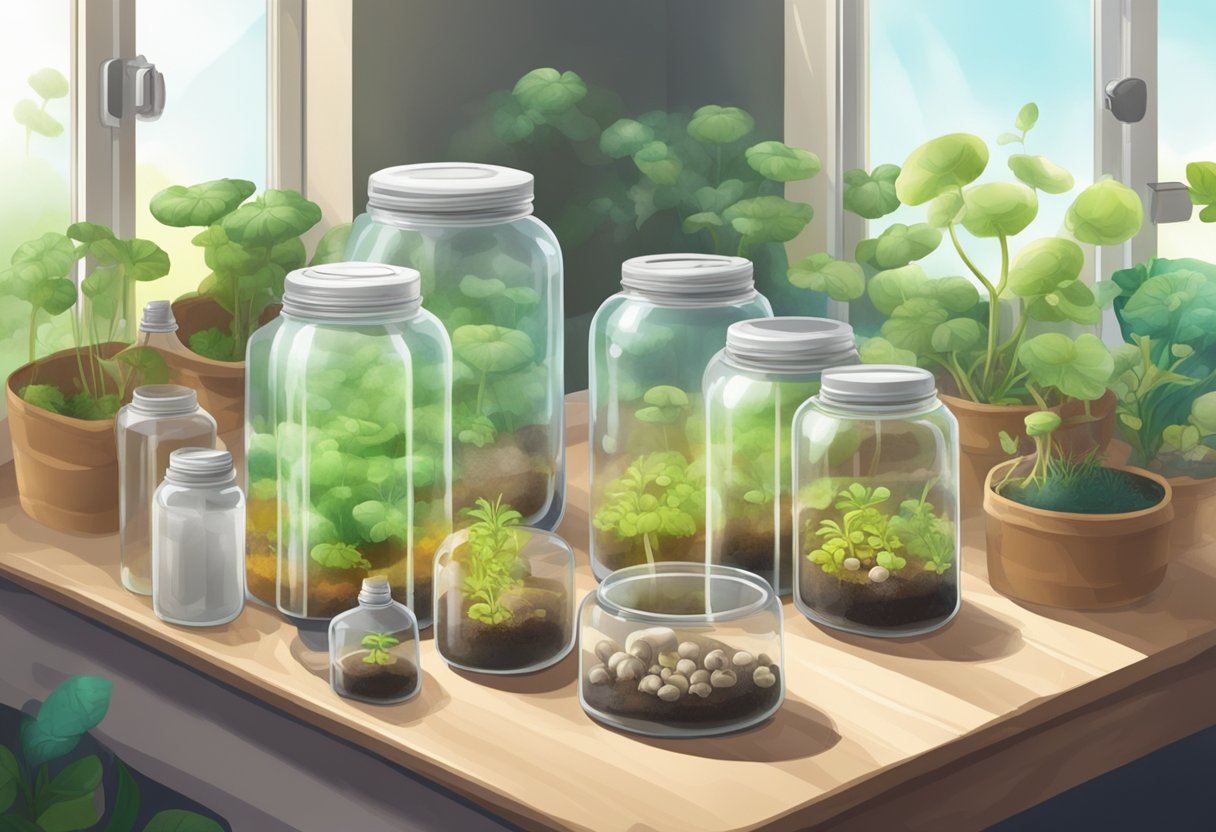
Optimal Growing Conditions
Mushrooms require specific conditions to grow. The following are the optimal growing conditions for most types of mushrooms:
- Light: Mushrooms do not require direct sunlight. They grow best in indirect light or complete darkness.
- Temperature: The ideal temperature for most mushrooms is between 55°F and 65°F. However, different types of mushrooms have different temperature requirements, so it’s important to research the specific type of mushroom you want to grow.
- Humidity: Mushrooms require a high level of humidity, between 70% and 90%. This can be achieved by misting the growing area regularly or using a humidifier.
- Climate: Mushrooms grow best in a climate that is cool and damp. Dry or hot climates can inhibit growth.
- Shade: Mushrooms prefer shade or indirect light. Direct sunlight can cause the growing area to become too hot and dry.
Space and Location Considerations
When growing mushrooms at home, it’s important to consider the space and location of the growing area. The following are some things to keep in mind:
- Space: Mushrooms can be grown in a variety of containers, including plastic bags, jars, and trays. The container should be large enough to allow for growth and should be kept in a clean, well-ventilated area.
- Location: The growing area should be located in a cool, damp place, such as a basement or garage. It should also be free from drafts and direct sunlight.
- Climate: The climate of the growing area should be consistent and cool. Changes in temperature or humidity can cause the mushrooms to stop growing or become contaminated.
- Cleanliness: It’s important to keep the growing area clean and free from contaminants. This can be achieved by using sterilized equipment and keeping the area free from dust and debris.
By following these basic requirements, anyone can successfully grow mushrooms at home.
Preparing Your Grow Space

Before beginning the process of growing mushrooms at home, it is essential to prepare your grow space properly. The right substrate and sterilization techniques can make all the difference in ensuring a successful harvest.
Choosing the Right Substrate
The substrate is the material that the mushrooms will grow on. There are several options available for home growers, including straw, sawdust, coffee grounds, potting soil, and cardboard. Hardwood sawdust is a popular choice due to its high nutrient content and availability.
When selecting a substrate, it is essential to consider the type of mushroom you wish to grow. Different species have different nutritional requirements and grow best on specific substrates. For example, oyster mushrooms thrive on straw and hardwood sawdust, while shiitake mushrooms prefer hardwood sawdust and logs.
Sterilization Techniques to Prevent Contamination
Sterilization is crucial to prevent contamination from bacteria, mold, and other fungi that can compete with your mushrooms for resources. There are several sterilization techniques available, including pressure cooking, boiling, and chemical sterilization.
Pressure cooking is the most effective method for sterilizing substrates, as it can kill all microorganisms, including spores. Boiling is a less effective method, as it cannot kill spores, but it can be suitable for small batches of substrates.
Chemical sterilization involves using chemicals such as hydrogen peroxide or bleach to sterilize the substrate. While effective, it can be hazardous to handle and may leave residual chemicals in the substrate.
In conclusion, choosing the right substrate and sterilization techniques is essential for growing mushrooms successfully at home. By following the tips outlined in this section, you can ensure a healthy and bountiful harvest.
Mushroom Spawn and Spores
Types of Mushroom Spawn
Mushroom spawn is the vegetative growth or mycelium of a mushroom, which is used to start the growth of new mushrooms. There are different types of mushroom spawn, including grain spawn, sawdust spawn, and plug spawn.
Grain spawn is made by inoculating sterilized grains, such as rye or wheat, with mushroom spores or mycelium. Sawdust spawn is made by mixing sawdust with mushroom spores or mycelium, and then packing the mixture into bags or jars. Plug spawn is made by inoculating wooden plugs with mushroom spores or mycelium, and then inserting the plugs into holes drilled into logs.
Working with Mushroom Spores
Mushroom spores are the reproductive cells of mushrooms, which can be used to start new mushroom colonies. To work with mushroom spores, it is important to maintain sterile conditions to prevent contamination.
One method for working with mushroom spores is to use agar plates. Agar is a gel-like substance that provides a nutrient-rich environment for the spores to grow. The spores are spread onto the agar surface and allowed to grow into mycelium. Once the mycelium has grown, it can be transferred to a substrate, such as grain or sawdust, to create spawn.
Another method for working with mushroom spores is to use a spore syringe. A spore syringe contains a suspension of mushroom spores in sterile water. The spores can be injected into a substrate, such as grain or sawdust, to create spawn.
Overall, understanding the different types of mushroom spawn and methods for working with mushroom spores is crucial for successfully growing mushrooms at home.
The Cultivation Process
From Inoculation to Fruiting
To grow mushrooms at home, the cultivation process involves a series of steps that require attention to detail and patience. The process begins with inoculation, where mushroom spores or spawn are introduced to a substrate. The substrate can be made of various materials, such as straw, sawdust, or compost.
After inoculation, the substrate needs to be kept in a controlled environment with the right temperature and humidity levels. Over time, the mycelium will colonize the substrate, and the fruiting stage will begin. This is when the mushrooms start to grow.
To ensure a successful fruiting stage, it’s important to maintain the proper environmental controls. This includes keeping the temperature and humidity at the right levels. Lowering the temperature can trigger the fruiting stage, and maintaining high humidity levels can help prevent the mushrooms from drying out.
Maintaining Proper Environmental Controls
To maintain proper environmental controls, it’s important to monitor the temperature and humidity levels regularly. A temperature range of 60-70°F is ideal for most mushroom species, while humidity levels should be kept around 90%.
To achieve these levels, a grower may use various tools such as a humidifier, a dehumidifier, or a temperature-controlled space. It’s also important to provide proper ventilation to prevent the buildup of carbon dioxide, which can inhibit mushroom growth.
Overall, growing mushrooms at home requires attention to detail and a controlled environment. By following the proper cultivation process and maintaining the right environmental controls, anyone can successfully grow their own mushrooms.
Caring for Your Mushroom Crop
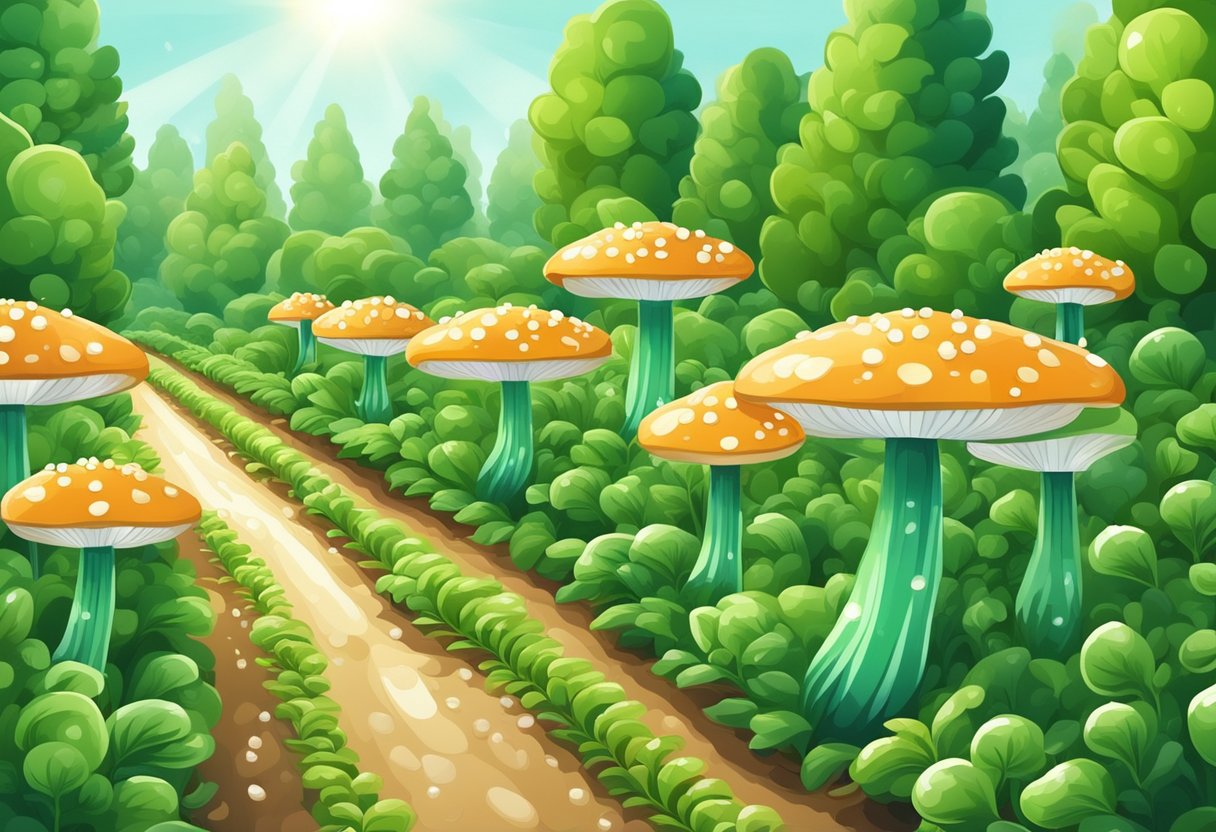
Watering and Humidity Management
Mushrooms require a consistent level of moisture to grow properly. It is important to keep the soil moist but not waterlogged. Over-watering can lead to fungal diseases and root rot. On the other hand, under-watering can cause the mushrooms to dry out and become unappetizing.
To maintain the ideal level of moisture, it is recommended to water the mushrooms once or twice a day, depending on the growing conditions. It is also important to maintain a humid environment, as mushrooms thrive in high humidity. A humidity level of around 80% is ideal for most mushroom varieties.
Dealing with Pests and Diseases
Mushrooms are susceptible to a variety of pests and diseases. Common pests include mites, flies, and slugs, which can damage the crop and reduce yield. Fungal diseases such as verticillium wilt and powdery mildew can also affect the mushrooms.
To prevent pests and diseases, it is important to maintain a clean and hygienic growing environment. Regularly inspect the crop for signs of pests or disease, and take appropriate action if necessary. This may include removing infected mushrooms or using natural pest control methods such as neem oil or diatomaceous earth.
Overall, caring for your mushroom crop requires attention to detail and a commitment to maintaining optimal growing conditions. By following these guidelines for watering, humidity management, and pest control, you can ensure a healthy and bountiful harvest of delicious mushrooms.
Harvesting and Preserving Mushrooms

When and How to Harvest Mushrooms
Knowing when to harvest mushrooms is crucial as it determines the yield and quality of the mushrooms. Most mushrooms are ready to harvest when the caps have fully opened, but before the gills begin to release spores. For best results, harvest mushrooms when they are young, firm, and have a smooth texture.
To harvest mushrooms, gently twist and pull the stem from the substrate, being careful not to damage the surrounding mycelium. Alternatively, use a sharp knife to cut the stem at the base. Avoid pulling or cutting the mushroom cap as it can damage the mycelium and reduce future yields.
Storing and Extending the Shelf Life
It is important to store mushrooms properly to maintain their freshness and flavor. After harvesting, remove any debris and gently wipe the mushrooms with a damp cloth to remove any dirt. Do not wash the mushrooms as they can absorb water and become slimy.
To extend the shelf life of mushrooms, store them in a paper bag or a container with a paper towel to absorb excess moisture. Mushrooms can also be stored in the refrigerator for up to a week. For longer storage, mushrooms can be dried or frozen.
To dry mushrooms, slice them thinly and place them on a baking sheet in a single layer. Dry them in a warm, dry place until they are crisp. Store dried mushrooms in an airtight container in a cool, dry place.
To freeze mushrooms, slice them and blanch them in boiling water for 2-3 minutes. Drain and cool the mushrooms, then pack them in freezer-safe containers or bags. Frozen mushrooms can be stored for up to 6 months.
By following these simple steps, one can harvest and preserve mushrooms for later use.
Advanced Techniques and Projects

Using Growing Kits for Beginners
For those who are new to growing mushrooms, using a mushroom growing kit is a great way to start. These kits come with everything you need to grow your own mushrooms at home, including substrate, spores, and instructions. They are easy to use and require minimal effort, making them a great option for beginners.
Mushroom growing kits are available in a variety of sizes and types, including oyster mushroom kits, shiitake mushroom kits, and more. They are also available in different formats, such as bags, boxes, and jars. Before purchasing a kit, it is important to research the type of mushroom you want to grow and choose a kit that is appropriate for that species.
DIY Projects with Logs and Stumps
For those who want to take their mushroom growing to the next level, there are many DIY projects that can be done using logs and stumps. These projects involve inoculating logs or stumps with mushroom spores and allowing them to grow over time. This method can provide a continuous crop of mushrooms for several years.
To start a DIY project with logs or stumps, it is important to choose the right type of wood. Hardwoods such as oak, maple, and birch are good choices. Softwoods such as pine and cedar should be avoided as they are not suitable for growing mushrooms.
Once the wood has been chosen, it must be inoculated with mushroom spores. This can be done using spawn plugs, sawdust spawn, or grain spawn. The inoculated logs or stumps must then be kept in a cool, dark, and damp place for several months until the mycelium has grown throughout the wood.
Overall, using growing kits and DIY projects with logs and stumps are great options for those who want to grow mushrooms at home. These methods are easy to use and can provide a continuous crop of mushrooms for several years.
Health Benefits and Uses of Homegrown Mushrooms
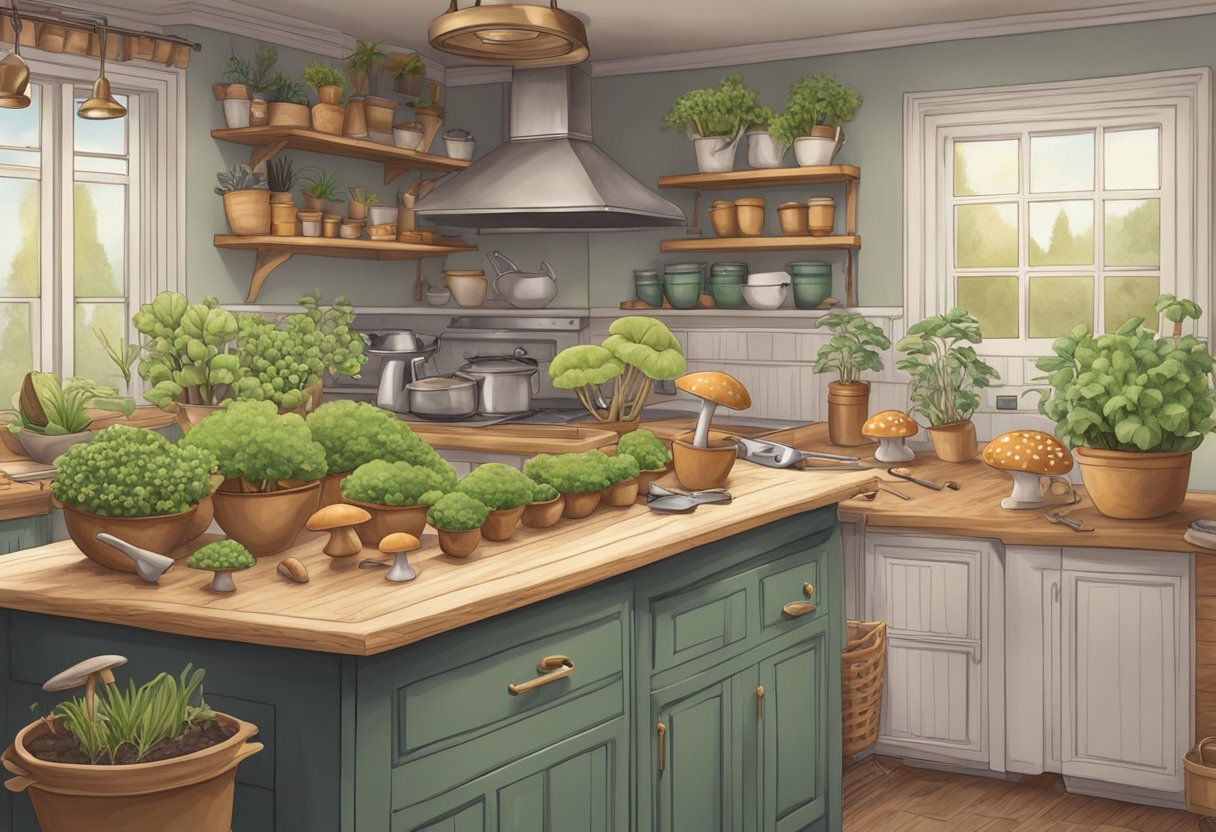
Nutritional Value and Medicinal Properties
Mushrooms are a type of fungi that are rich in nutrients and have various medicinal properties. They are low in calories, fat-free, and contain a good amount of fiber, vitamins, and minerals. Some of the key nutrients found in mushrooms include vitamin D, potassium, and selenium.
In addition to their nutritional value, mushrooms are also known to have medicinal properties. They contain compounds such as beta-glucans, which can help boost the immune system, and ergothioneine, which has antioxidant properties and may help protect against cell damage.
Incorporating Mushrooms into Your Diet
There are many ways to incorporate homegrown mushrooms into your diet. They can be sautéed, grilled, roasted, or added to soups, stews, and pasta dishes. They can also be used as a meat substitute in vegetarian and vegan recipes.
One easy way to enjoy the health benefits of mushrooms is to make a simple mushroom omelet. To make this dish, simply sauté some sliced mushrooms in olive oil until they are tender and then add them to beaten eggs. Cook the eggs until they are set and then fold the omelet in half.
Another great way to enjoy mushrooms is to add them to a salad. Simply slice some mushrooms and add them to your favorite salad greens. Top with a simple vinaigrette dressing and enjoy!
In conclusion, homegrown mushrooms are a nutritious and versatile food that can be enjoyed in a variety of ways. Whether you are looking to boost your immune system, improve brain health, or simply enjoy a delicious meal, mushrooms are a great addition to any diet. As a freelance writer, it is important to stay informed about the latest health trends, and homegrown mushrooms are definitely a trend worth exploring.
Frequently Asked Questions
Which mushroom varieties are best suited for indoor cultivation?
There are several mushroom varieties that are well-suited for indoor cultivation. Some of the most popular ones include oyster mushrooms, shiitake mushrooms, and button mushrooms. These mushrooms are relatively easy to grow and require minimal space and equipment.
What are the most nutritious mushrooms that can be easily grown at home?
Mushrooms are a good source of protein, fiber, and several vitamins and minerals. Some of the most nutritious mushrooms that can be easily grown at home include shiitake mushrooms, oyster mushrooms, and maitake mushrooms. These mushrooms are rich in nutrients like potassium, copper, and B vitamins.
How cost-effective is it to cultivate mushrooms at home compared to purchasing them?
Cultivating mushrooms at home can be a cost-effective alternative to purchasing them. While the initial setup cost may be higher, the ongoing cost of growing mushrooms is relatively low. Additionally, growing mushrooms at home allows you to control the quality and freshness of the mushrooms you consume.
What safety precautions should be taken when growing mushrooms domestically?
Growing mushrooms at home can be safe as long as proper precautions are taken. It is important to maintain a clean and sterile environment throughout the growing process to prevent contamination. Additionally, it is recommended to wear gloves and a mask when handling mushroom spores to prevent respiratory irritation.
What is the ideal environment for home mushroom cultivation?
The ideal environment for home mushroom cultivation varies depending on the type of mushroom being grown. However, most mushrooms require a cool and humid environment with indirect light. A temperature range of 60-75°F and a humidity level of 70-90% is generally ideal for most mushroom varieties.
How long does it typically take to grow edible mushrooms at home?
The time it takes to grow edible mushrooms at home varies depending on the type of mushroom being grown. Generally, it takes between 2-6 weeks for mushrooms to fully mature and become ready for harvest. However, some varieties may take longer or shorter depending on the growing conditions and other factors.


